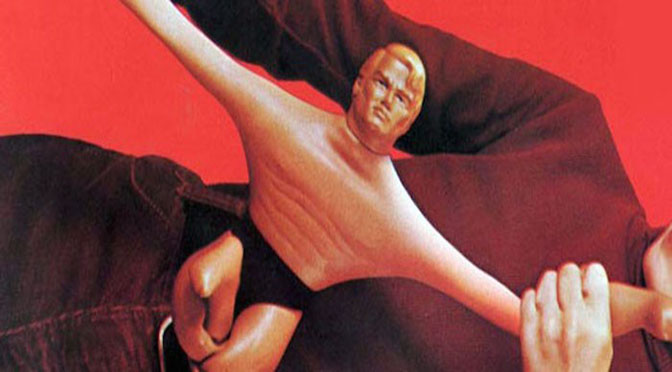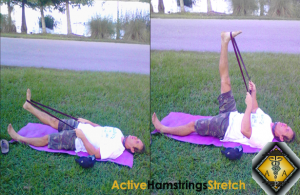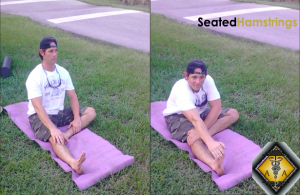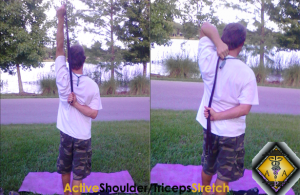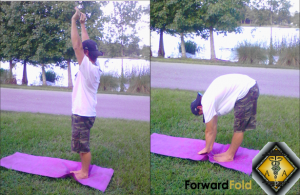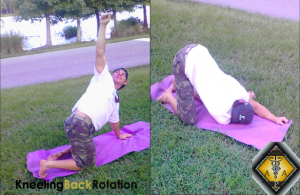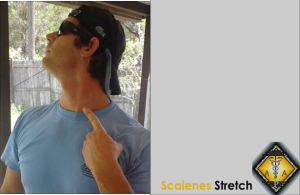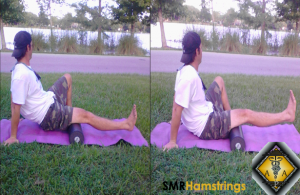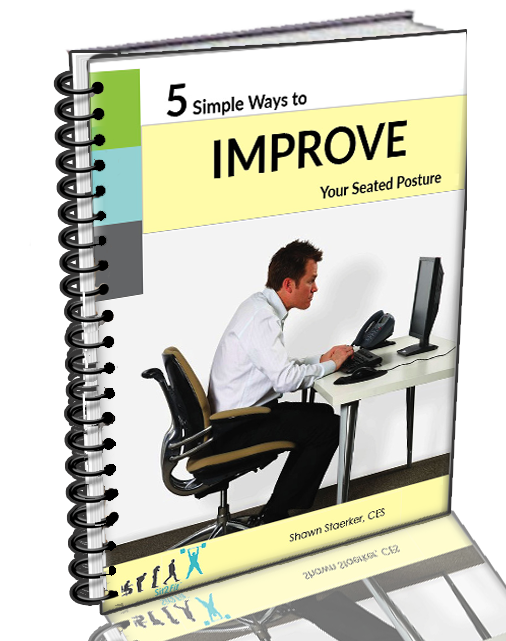For a generation that grew up with The Fantastic Four, flexibility seems as though it would be of prime import to any aspiring super-heroes. However, stressful weeks of battling rush hour traffic, combating TPS reports and feeding the needy have left most of us hamstrung by muscle tightness. Lacking the natural range of motion, our action-figure like forms must work harder to maintain stability and provide adequate blood flow to the body. The good news is that it doesn’t take a super workout regimen or training facility to lengthen the muscles and reap the myriad of health benefits from increased flexibility.
All Tore’ Up Inside
Stressing a muscle fiber (through riding, weight lifting or agricultural/manual labor) causes small tears in the tissue, which then heal through the addition of scar tissue. This increase of scar tissue is what causes muscle tightness, as the harder scar tissue thickens with less pliability than muscle tissue. Repeated tearing only further promotes more scar tissue formation and eventually, as though our super-figures were blasted with a freeze ray, the body’s range of motion is limited to just eye blinks and nostril flares.
As more and more scar tissue ties up the muscles, it also causes a restriction of blood circulation to those parts of the body. Excessive scarification deprives the muscles and ligaments of crucial nutrients, including oxygen, and can hamper our nightly super-regeneration. .
Static Cling
One of two different stretching methods, static flexibility is generally reserved for after crime fighting activities, when the muscles have already been stressed. (Exceptions to this include Yoga, which helps the Hero prepare for hours of mind-enriching meditations). Static flexibility routines need not be over-complicated or tie the aspiring super-person into unrecoverable postures. This style of flexibility relies on the musculoskeletal system’s own super power: relaxing under tension. Simply take a static stretch to the limit of your own range of motion and hold the position/pose for no less than 30 seconds. Like a 9-5 super-hero under attack from rush hour traffic mutants, our muscles and tendons simply give up and are more limber, thus saving the body from additional harm due to over-stress.
Talking sm’Active
Another type of stretching is termed “active” stretching, since the body is being asked to move during the stretching session. Many times this stretching method can be seen employed by our weekend’s finest gladiators on the field or the pitch before a heated contest. (If one has also taken a Vinyasa Yoga class, they will encounter active stretching techniques).
Much like the thawing process for a super-hero blasted by a freeze ray, active stretching relies on very small increases in the range of motion through constant activity. For example, a common active stretch (especially seen in golfers or baseball player) is a trunk rotation—where the upper body is rotated from side to side slowly (holding for 2-3 seconds at the limit of range of motion), each time increasing the trunk’s flexibility.
Release Me
Self-Myofascial Release is the only stretching method that requires the super hero to maintain a piece of equipment amidst his or her bat-closet belongings. A simple foam roll (available from Acme stores globally, or one’s own local Target), resembling a thicker pool noodle, is used to maintain tension on the muscle/fascial system and provoke a “release” and subsequent increase in range of motion. Like the Static stretching variety mentioned above, Self-Myofascial Release relies on time ranges of 25-45 seconds of holding the body against the foam roll. (See picture).
A bit of caution to aspiring Allan Quartermains–foam rolls should not be placed on the knee joint, lower neck, bulging disks, or any other injury (whether gained in vigilante activities or not).
Flex Luthor
Try the following stretching routine (w/optional foam roll exercise), designed to increase flexibility in some of the most commonly beneficial areas, while still short enough to fit into a super hero’s demanding schedule:
Forward Fold Stretch: Simply stand with your feet together and bend forward from the waist—keeping the knees locked, while trying to touch the ground with your fingers or palm of the hand.
Seated Hamstrings Stretch: Sit with one (or both legs) extended and reach as far down one leg as possible while bringing your torso closer to the leg being stretched. Repeat for the other leg.
Kneeling Back Stretch: Starting from a “hands-and-knees/all-fours” position, turn and raise the right arm out and over your body (as far as your chest and shoulder muscles will allow). After holding for 10-15 seconds, bring the right arm down and through the space between your knees and left arm. Set the head, neck and shoulders down on the ground as your body’s twisting motion helps to stretch the back muscles. Repeat with the left arm.
SMR/Foam Roll Hamstrings: Place a foam roll under the back of your left leg, keeping the hips off the ground if possible. (Some pre-existing injuries prevent this from happening. In these cases, the hips may rest on the ground). Slowly roll the foam tube along the hamstrings, STOPPING on any tender spots for 25-45 seconds.
Active Shoulder Stretch: (This exercise requires a towel, shirt, belt—or, in this case, a dog lead). Reaching behind the back, grab your chosen accessory with the left hand on top, and the right hand reaching around the waist to grab the other end of your belt, lead, etc. Begin the stretch by pulling up with the left, holding for 2-3 seconds, and then pulling downward with the right hand, holding for another 2-3 seconds. Continue as such for 30-40 seconds. Repeat with the right hand on top and left hand on bottom.
Active Hamstrings Stretch: (Again, we require the use of a belt, lead rope, etc.). Laying on a mat (face up) loop a belt around the bottom of your right foot, using the hands to pull your leg towards the body, holding for 2-3 seconds before releasing. Continue for 30-40 seconds, trying each time to bring your leg closer to your chest. Repeat with the left leg.
*don’t mind the logo–we’ve “transitioned” since then!
